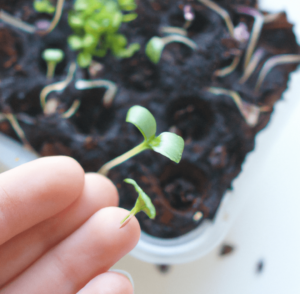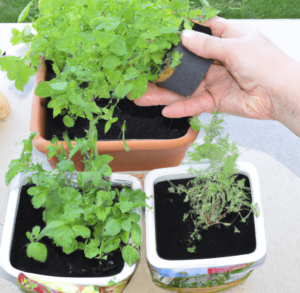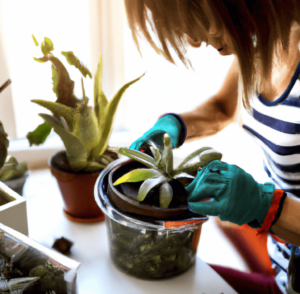Learning how to sow seeds is essential in gardening. This way, many different plants, including vegetables, can be cultivated inexpensively. Whether you plant indoors or outdoors, sowing seeds may be a simple and rewarding activity.
Choosing the Right Seeds
When you’re learning how to prepare your garden bed or are simply looking through catalogs, choosing the right seeds is important. Because different climates and seasons of the year favor particular vegetables, gardeners should take the season into consideration.
Knowing what grows well indoors and the kinds of environmental requirements your plants have, like light and temperature, will also help you choose your seeds properly.
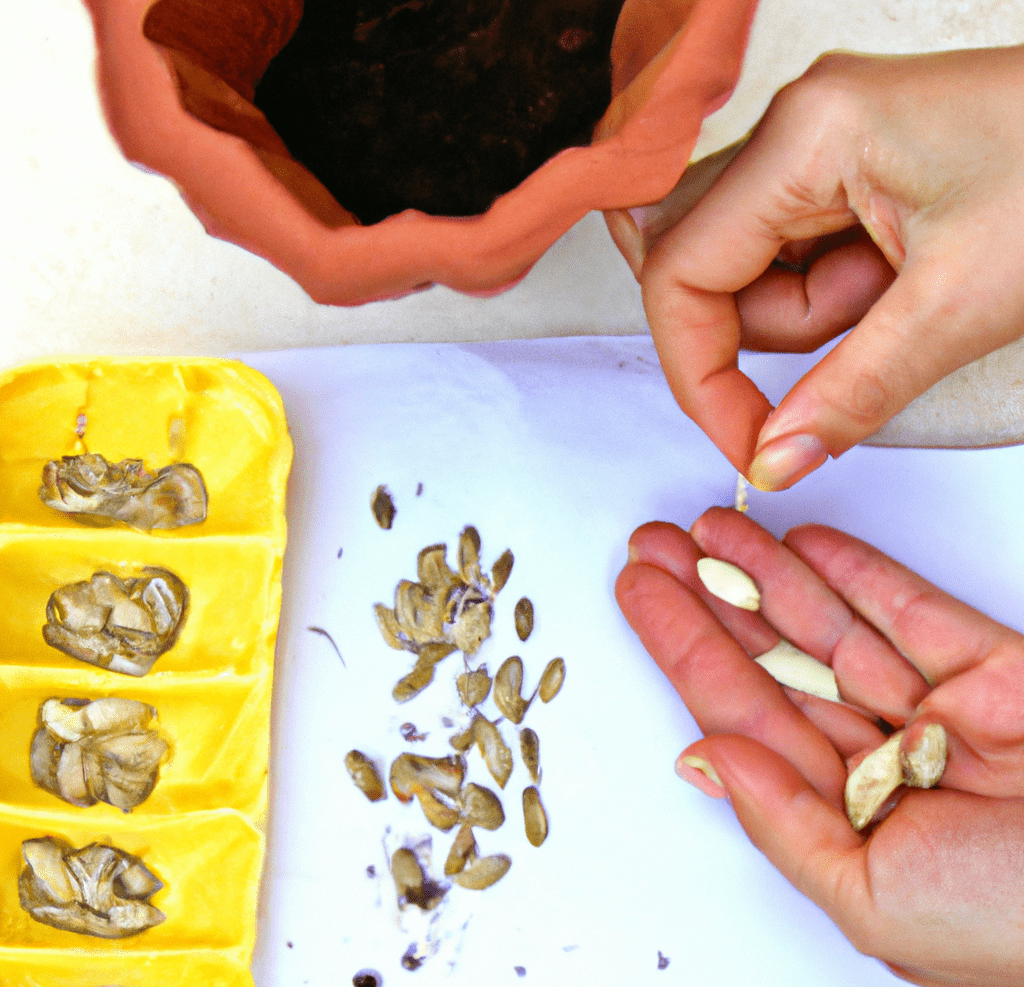
Factors to Consider When Selecting Seeds
Selecting the right seeds for your garden is an essential step in guaranteeing a good yield. When choosing seeds, it’s important to consider the growing zone, the climate, and the season. This will increase the likelihood that the seeds you plant will grow well and yield sturdy vegetable plants:
- The growth zone refers to the areas of the country with similar climatic conditions and weather patterns. Due to the fact that different vegetable plants require different development zones, it is imperative to choose seeds that are suited for your area. You may determine your planting zone by looking in a gardening book or on the USDA website.
- The climate is yet another important factor to consider when selecting seeds. Due to the fact that various vegetable plants have varying requirements for moisture, temperature, and sunlight, it is imperative to select seeds that are suitable for your region’s climate. For instance, warm-season crops like tomatoes and peppers should be grown in areas with hot, dry summers, whereas cool-season crops like lettuce and spinach should be planted in areas with milder, colder temps.
- It’s important to consider the season. Some vegetables, like beans and maize, can be sown directly into the ground when the temperature is warm enough. A few weeks prior to the last anticipated frost, other plants, such as tomatoes and peppers, must be started indoors. Knowing when to plant each type of crop can help you ensure a successful harvest.
Understanding Seed Packets
When you’re learning how to sow seeds or looking through different gardening guides, you might see that most gardeners say to refer to the seed packet of an herb or flower. Here’s what you need to understand:
- The germination rate is the proportion of seeds in a packet that will successfully sprout. A high germination rate increases the possibility of a successful crop.
- The number of days it will take for plants to mature and become suitable for harvest is known as the days to maturity. If you want to guarantee that your plants will be prepared for the growing season at the proper time, planning is vital.
- The “planting depth” refers to the depth at which the seeds should be sown. This and the suggested spacing between seeds are often both mentioned on the seed packet.
By following these guidelines, you can ensure that your seeds are given the proper amount of space, water, and sunlight to grow.
Preparing the Soil
Before learning how to sow seeds correctly, you need to prepare the soil. Whether you want to grow plants indoors or outdoors, When preparing the soil for indoor planting:
- It is essential to choose a high-quality seed-starting mix that is well-drained and provides adequate nutrients for the seeds to thrive.
- Prior to planting outside, till the ground to a depth of 8 to 10 inches and add compost or other organic matter. This will improve the soil’s structure and fertility. Before planting, the pH of the soil must be tested to see whether it is acidic, neutral, or alkaline.
- The majority of vegetables grow best in slightly acidic soil with a pH of 6.0 to 6.8. By adding sulfur to lower the pH or lime to raise it, you can adjust the pH of the soil if it is too high or low.
- Rake it so that it’s smooth and check the planting area for weeds or other impediments. This will enable you to make sure that the seeds are planted in a neat, prepared bed that will provide the best conditions for germination and growth.
Steps for Preparing the Soil
To prepare the soil and move on to how to sow seeds, follow these steps:
- Remove any trash, rocks, or sticks from the soil’s surface to get started. The surface will be level and smooth as a result, preventing the seeds from becoming caught.
- Using a garden fork or tiller, break up the soil and work in air, water, and nutrients. This will encourage the best seed germination and growth possible.
- Compost or fertilizer will be applied to the soil to provide the nutrients needed for seeds to sprout and grow into healthy plants. Use compost or a balanced fertilizer with potassium, phosphorus, and nitrogen to gradually supply nutrients to the soil.
Understanding Soil pH and How to Adjust It if Necessary
The pH of the soil, which affects plant growth, determines how acidic or alkaline it is. Most plants prefer soil that has a pH of 6.0 to 7.0, which is considered to be neutral. However, certain plants prefer acidic soil, while others prefer alkaline soil.
Gardeners should be conscious of the pH of their soil, particularly when planting seeds, as an improper pH may prevent seeds from germinating or result in stunted growth. Monitoring soil pH is essential since growing conditions can be better managed indoors and modifications can be made more easily when necessary.
To alter the pH of the soil, gardeners might add acidic or alkaline substances like sulfur or lime. Regularly test the soil to make sure the pH is staying within the right range. This is an important skill to have when you’re learning how to sow seeds.
Sowing the Seeds
Now, here’s how to sow seeds correctly:
- Before planting the seeds, check the seed packet for the recommended depth. This will vary based on the kind of vegetable and the size of the seed.
- The seeds should be gently inserted at the recommended depth. Space the seeds equally apart to allow them to develop and sprout.
- After you’ve planted your seeds, softly wet the ground to encourage root growth. Water the soil frequently, keeping it moist but not soggy, to promote good seed germination.
Make sure the seeds are sown in a location with the ideal temperature and light levels to promote healthy growth.
Different Techniques for Sowing Seeds
As you learn how to sow seeds, there are different techniques you can use:
- An enormous area of soil is evenly covered with seeds when seeds are sown using the broadcasting technique. This method works best with plants like lettuce or carrots that have tiny, difficult-to-handle seeds. Despite being a rapid and easy way to plant seeds, broadcasting has the potential to overload the soil and reduce overall output.
- The drilling technique is used to put seeds in rows or lines. This method is appropriate for larger seeds like beans or maize because it ensures exact spacing and makes it easier for gardeners to keep track of the rows. Germination rates can be boosted by drilling seeds at a constant depth.
- Transplanting is the process of growing seedlings in a separate location before moving them into the garden when they are a few weeks old. This method works best for plants with long growing seasons, such as tomatoes or peppers, as it enables gardeners to kickstart the growing season. Transplanting can also boost total yield since the seedlings have more room to grow.
Gardeners can plant seeds using a variety of techniques, including broadcasting, drilling, and transplanting
Tips for Ensuring Proper Seed Spacing and Depth
As you’re learning how to sow seeds, you need to make sure you have the proper spacing and depth:
- Look at the seed packet: The seed packet will frequently have recommendations on the optimal depth and spacing depending on the type of vegetable you are planting. It is essential to follow these guidelines for the greatest results.
- Consider the season: The appropriate seed depth and spacing are also determined by the season. For example, seeds planted in the cooler months may require deeper burying than seeds planted in the warmer months.
- Experiment: To determine which works best for your particular growing conditions, experiment with various spacings and depths. Try experimenting with different spacings and depths if the seed packaging does not provide explicit instructions.
Caring for Seedlings
One of the most important stages in the growth of vegetables is the maintenance of seedlings. Now that you’ve learned how to sow seeds, here’s how to take care of them:
- Give seedlings ample light so they can develop strong and healthy. If you are starting them indoors, put them close to a light source, such as a window or grow lights.
- Keep the soil at a normal moisture level, but avoid allowing it to get wet. As a result, the seeds will germinate more readily and the young plants won’t dry out.
- Watch the temperature since vegetable seedlings thrive in warm, comfortable settings. Maintain a temperature of between 60°F and 70°F in the area where they are growing.
- The fungus known as damping off has the potential to kill young seedlings. To prevent it, sow seeds in soil that drains well and maintain the area around the plants clean and debris-free.
- It is important to trim out crowded seedlings so that each plant has enough room to develop. Do this if the same container is home to numerous seedlings.
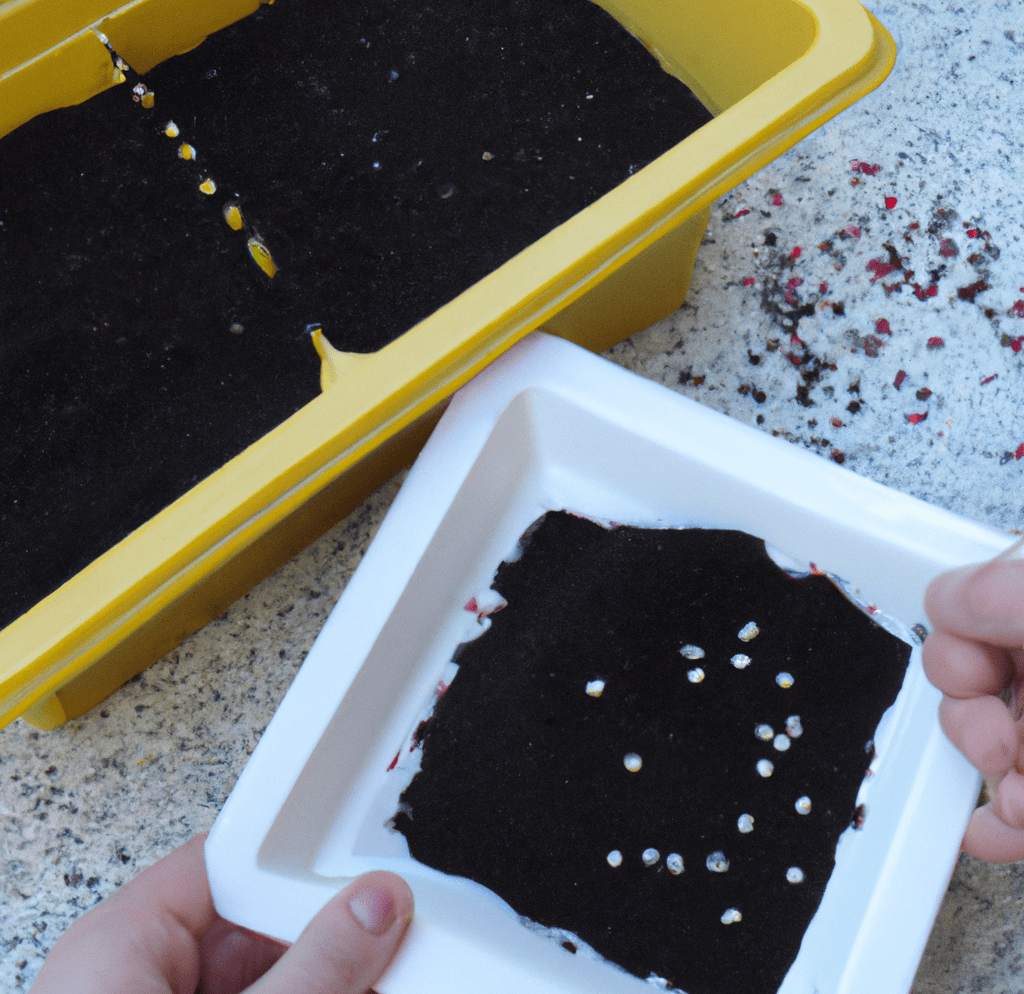
Steps for Caring for Seedlings
It’s crucial to give your seedlings the care they require to thrive properly once they have sprouted and emerged:
- Watering: Seedlings require a consistent supply of moisture to grow. But be careful not to overwater, as this can result in root rot. Avoid disturbing the seedlings as you water the earth gently.
- Fertilizing: The seedlings will require more nutrients as they grow older to maintain their growth. To provide the necessary nutrients, use a balanced fertilizer as instructed on the label of the product.
- Thinning: It’s important to separate seedlings that have sprouted in the same place in order to prevent overpopulation. This will guarantee that every seedling has enough space to develop into a strong, healthy plant.
The Importance of Proper Light, Temperature, and Humidity for Seed Germination and Growth
Seed germination and the development of young plants depend greatly on the right combination of light, temperature, and humidity. Even though you know how to sow seeds, these factors determine your success:
- Light: For seeds to germinate and flourish, they need light. While some seeds require darkness to begin germination, others require light. When seedlings first appear, they require a lot of intense light in order to grow robust, wholesome stems and leaves.
- Temperature: Depending on the species of plant, different temperatures are required for the growth of seeds and seedlings. The majority of seeds, however, germinate best in warm, cozy environments between 60°F and 70°F.
- Humidity: The amount of humidity in the air can affect how well seeds germinate and how quickly young seedlings grow. Low humidity can cause seedlings to dry out, while high humidity can foster an environment that is conducive to mildew and illness.
You may encourage the germination and healthy growth of your seeds by creating the ideal conditions.
Transplanting Seedlings
An essential part of growing vegetables is transplanting seedlings. The young plants must be transferred from an indoor location to a garden bed or another outside growing area. You can learn how to sow seeds and transplant them as needed with the following tips:
- The right size: When a seedling is big enough to handle but still little enough to be carried easily, transplant it. This often occurs when they have grown at least two genuine leaves.
- Get the soil ready: Select a site with good drainage, and add compost or other organic matter to the soil to improve it. For the seedlings, this will help produce a healthy growing environment.
- Transplant carefully: Handle seedlings gently by their stems or leaves while transplanting them. To avoid hurting the roots, touch them as little as possible if you must.
- Water as needed: Water the seedlings thoroughly to help them adapt to their new environment. To assist keep the young seedlings from drying out, maintain the soil at a constant moisture level but avoid making it soggy.
- Monitor: watch the seedlings carefully and make any required adjustments to their developing environment. To guarantee that they continue to develop and thrive, give them enough light and keep an eye on the temperature and humidity levels.
When and How to Transplant Seedlings From Seed Trays or Pots to the Garden
As a gardener, it’s probable that you’ve spent a lot of time and energy raising your seedlings from germination to the stage where you get to use everything you learned in how to sow seeds. Here are our tips:
- Choose the Right Time: The type of seed and the environmental conditions in your garden will determine the best time to transplant seedlings. Wait until the seedlings have several genuine leaves and are at least a few inches tall, as a general rule of thumb.
- Get the garden bed ready: Loosen the soil in the garden bed and get rid of any weeds before transplantation. Make sure the bed has proper drainage and is free of debris.
- Planting: Plant the seedlings in the prepared garden bed after carefully removing them from the seed tray or pots. To give the seedlings adequate room to develop and expand, space them correctly for the type of seed.
- Support: Some seedlings can require assistance to grow upright, such as a cage or stake. Give the seedlings the support they require to give them the best chance to succeed.
Bottom Line: How to Sow Seeds
An essential part of gardening and crop-growing is learning how to sow seeds. In order to reap a fruitful harvest, it is crucial to comprehend the fundamentals of seed sowing whether you are growing vegetables, flowers, or other plants.
The procedures needed in planting seeds, such as correct seed selection, soil preparation, and seedling care, have been covered in this article. Choosing high-quality seeds, preparing the soil, and planting the seeds-either indoors or outside-are the main steps in the sowing process. It is crucial to create the ideal conditions for seeds to germinate, including enough moisture, heat, and light for seedlings.
FAQs on How to Sow Seeds
What should you do initially to make a successful garden?
A successful garden is created by learning how to sow seeds.
What are the advantages of planting seeds?
There are many advantages to planting seeds, such as the freedom to choose how and when to apply pesticides and fertilizers, the availability of healthy, fresh fruits and vegetables, and the satisfaction of producing your own food.
What different methods are there for planting seeds?
Direct sowing, beginning seeds inside, and utilizing seed tapes or mats are a few methods for planting seeds.
What benefits come with planting seeds indoors?
You can extend the growing season and shield seedlings from bad weather by beginning seeds indoors.
What benefits come with using seed tapes or mats?
Because they evenly space the seeds apart and don’t require thinning, seed tapes and mats are a practical and hygienic way to plant seeds.
What aspects need to be taken into account when selecting vegetable garden seedlings?
The growing zone, environment, and season should all be taken into account while selecting seeds for a vegetable garden.
What details are included in seed packets?
Seed packets include instructions for planting depth, recommended temperature for germination, and how much water the seeds require.
What is the rate of germination?
The percentage of seeds in a packet that germinates successfully is known as the germination rate.
What procedures should be followed to get the soil ready for seed planting?
A high-quality seed-starting mix must be selected for indoor planting, and for outdoor planting, the soil must be tilled and amended with compost or other organic material. Before planting, the soil’s pH must also be measured.
What factors should I take into account when planting seeds to guarantee optimum depth and spacing?
As a gardener, you should adhere to the instructions on the seed packet for the ideal depth and spacing, taking into account the season and, if necessary, experimenting with various depths and spacings.
What advice do you have about taking care of seedlings?
To prevent damping off, seedlings should be given plenty of light, maintained at a reasonable moisture level, kept warm (between 60°F and 70°F), and pruned if they are crowded.
What advice would you give someone transplanting seedlings?
When you’re learning how to transplant seedlings, they should be are large enough to handle but still light enough to carry. Usually, this happens when they have two or three genuine leaves. Before planting, the seedlings should be progressively acclimated to their new location and the soil around them kept moist but not soggy.


